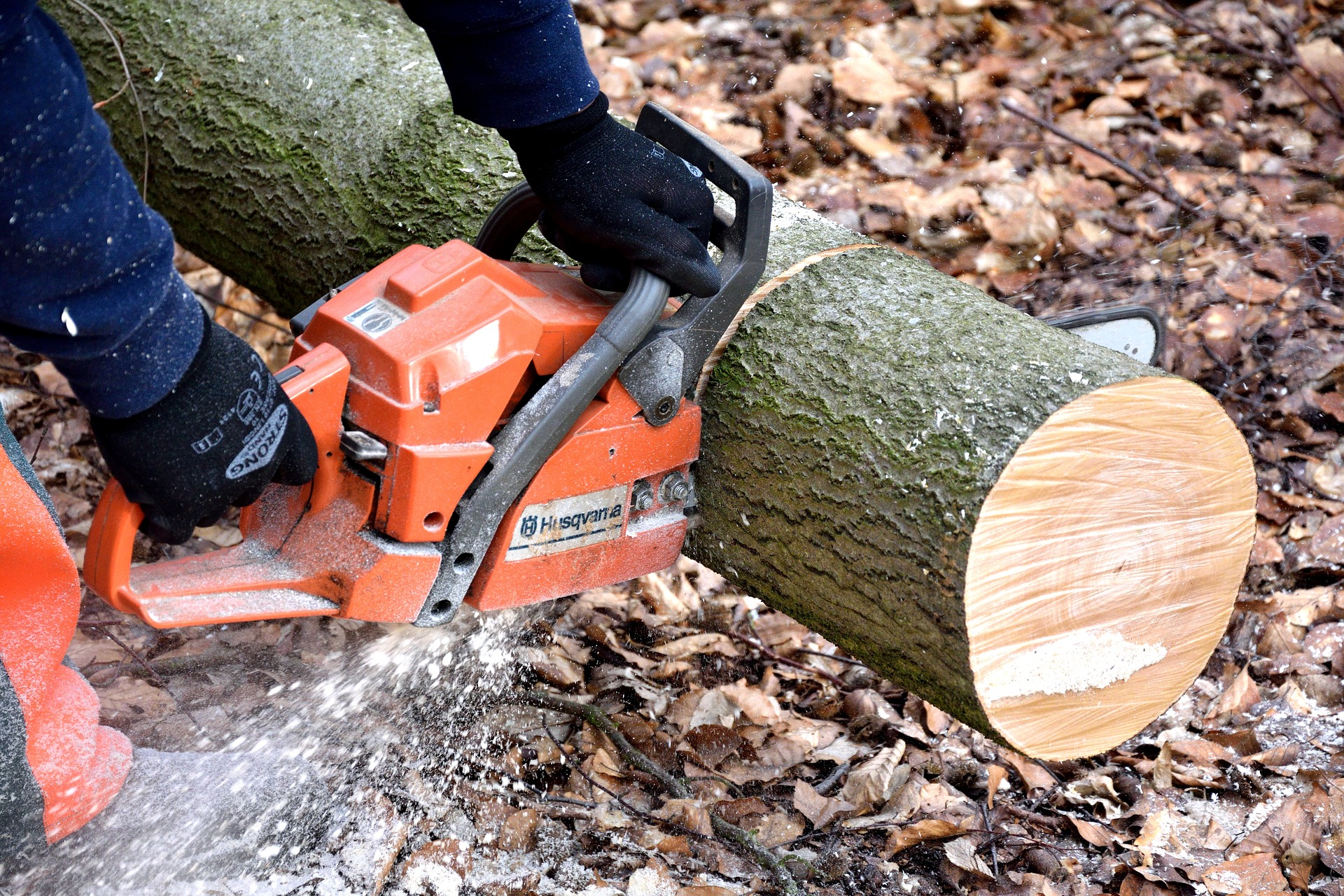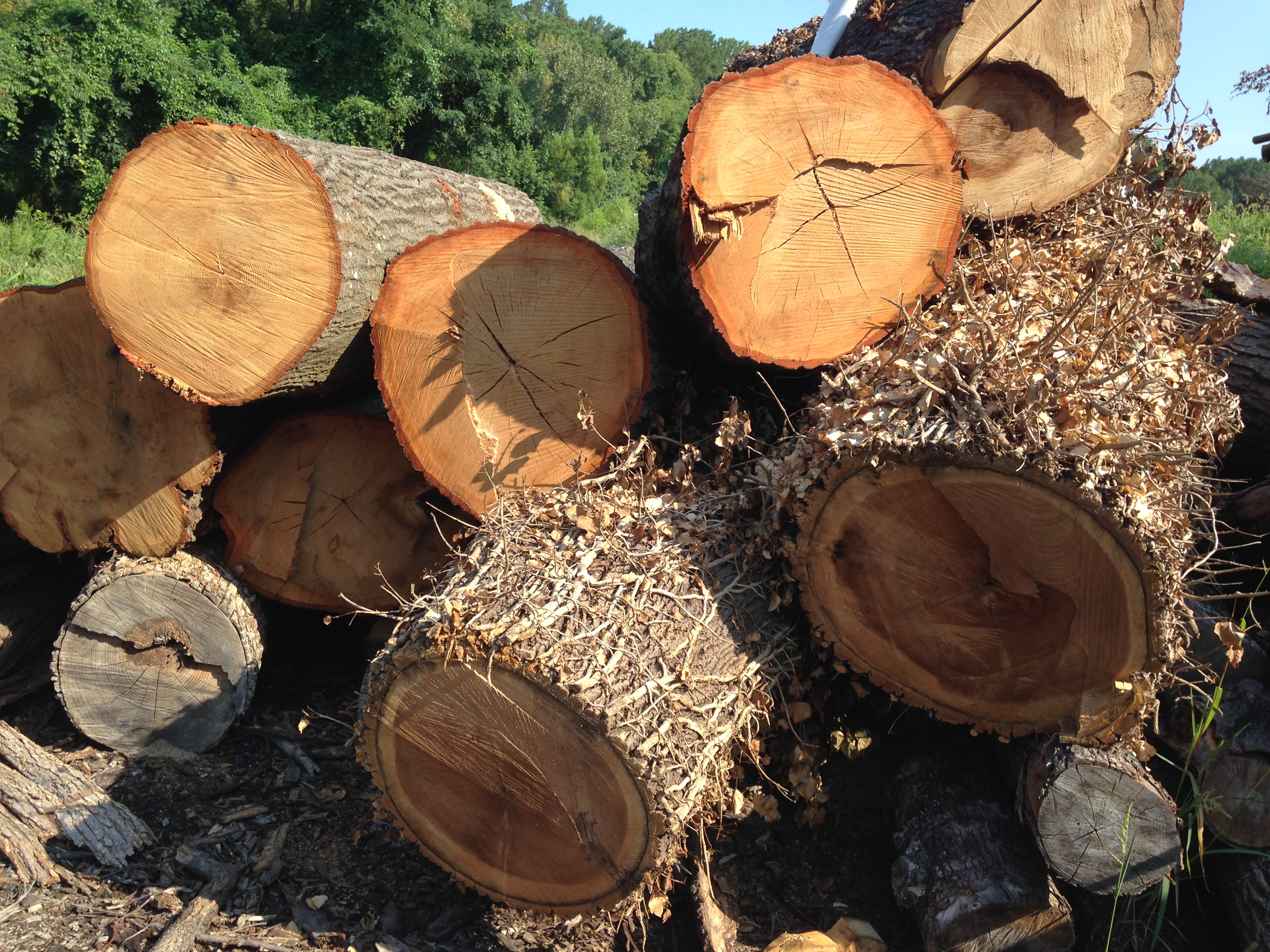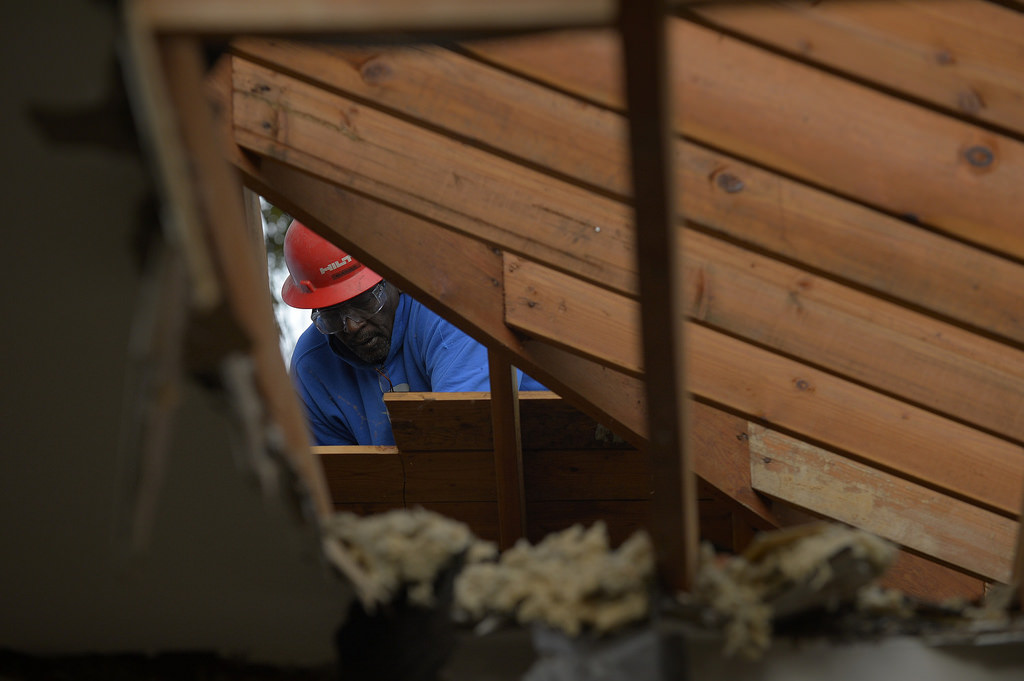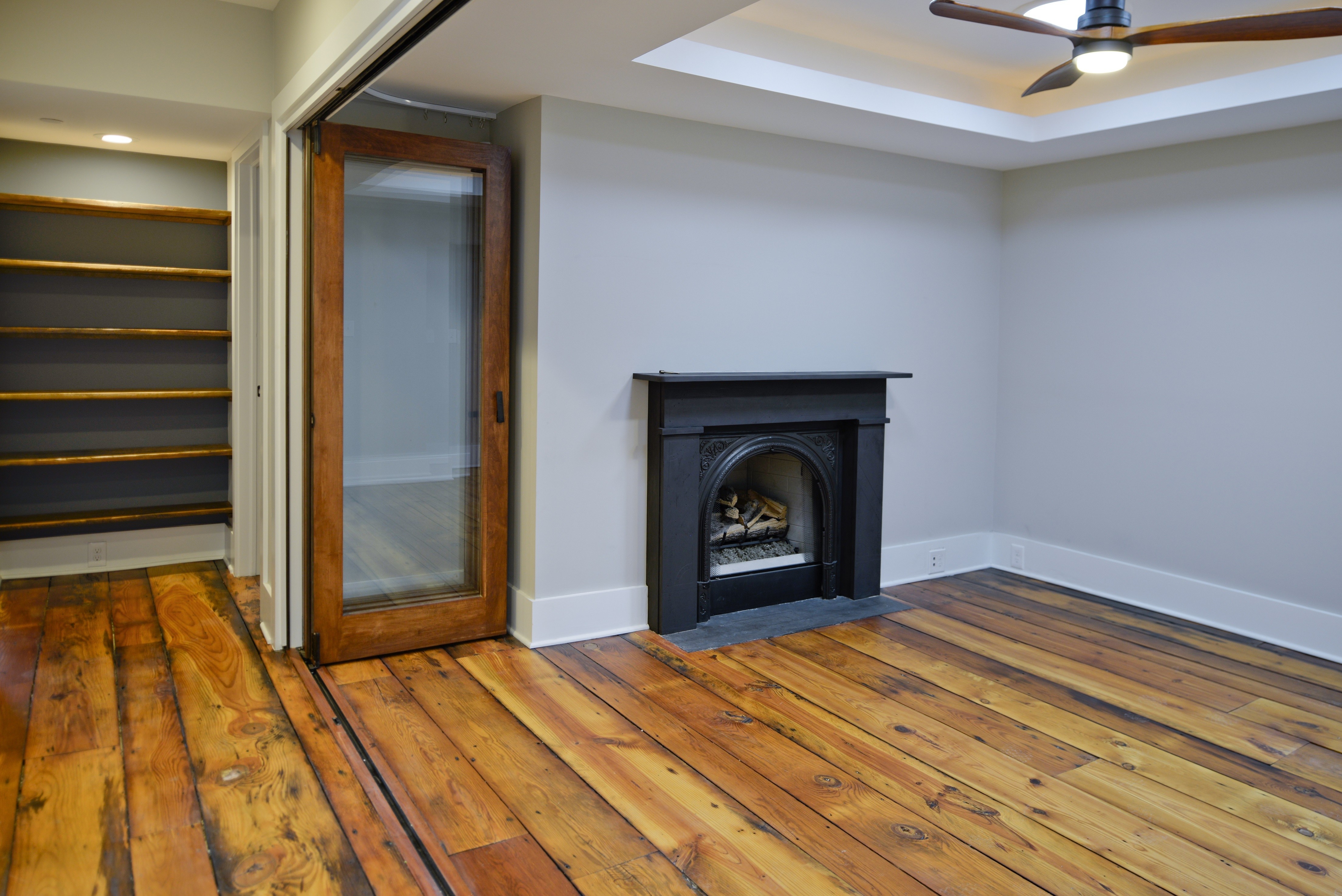Fresh cut
This is wood literally growing in an urban forest. Some will be removed by municipal crews working on public land – vulnerable street or park trees for example. Other sources include wood cleared from development or construction sites, or cut by tree care companies on private lands.

Too CommonWith better training, this crew member might have cut this log into 8-foot lengths for lumber, instead of rounds for firewood.
Currently, Baltimore City’s in-house and contract tree care crews generate waste from tree care operations and bring it to Camp Small, a 4.5 acre site in the center of Baltimore.

Stacked at Camp SmallRoughly 8,000 tons of wood “waste” are delivered to Camp Small annually.
Managed by the City’s Division of Forestry, Camp Small converted virtually all of this waste into material for reuse by the city, residents and commercial buyers.
Counting Trees
That’s a big part of the process. Before you start operating, you’ll need to develop at least rough estimates of how much usable wood might still be standing. Fortunately, someone else may have done the work.
Deconstruction
Deconstruction is different from demolition; it involves identifying valuable and re-usable materials in the building, then removing them in a way that the material can be reused. Demolition may be quicker, but deconstruction creates at least twice as many jobs and adds another revenue stream to the project. In Baltimore, deconstruction is cost-competitive with demolition — even without accounting for social and environmental benefits.

People will pay
Buyers and builders still prize old-growth timber – fine-grained, strong and beautiful – for furniture, floors, millwork, even art.
But there’s not much left in the woods to harvest, and most of that will likely [and rightly] never come to market. Fortunately, there’s plenty of old growth wood.
It just happens to be locked up in abandoned buildings constructed decades ago – most with timber harvested from America’s then-abundant old-growth forests.

The flooring in the Capital Hill town home was recovered from a “deconstructed” building.

